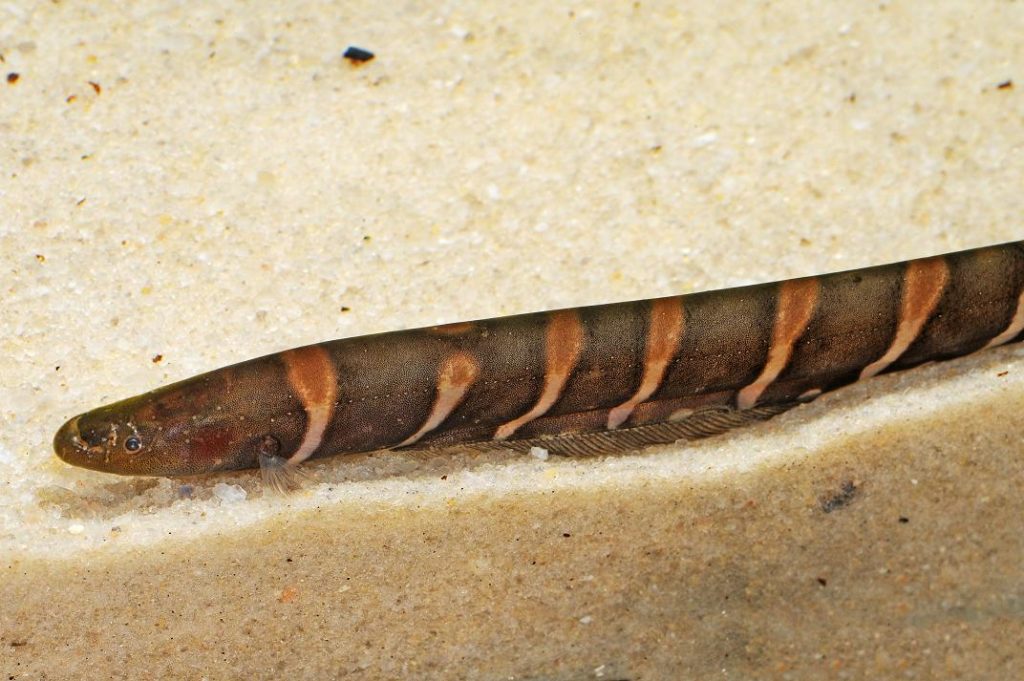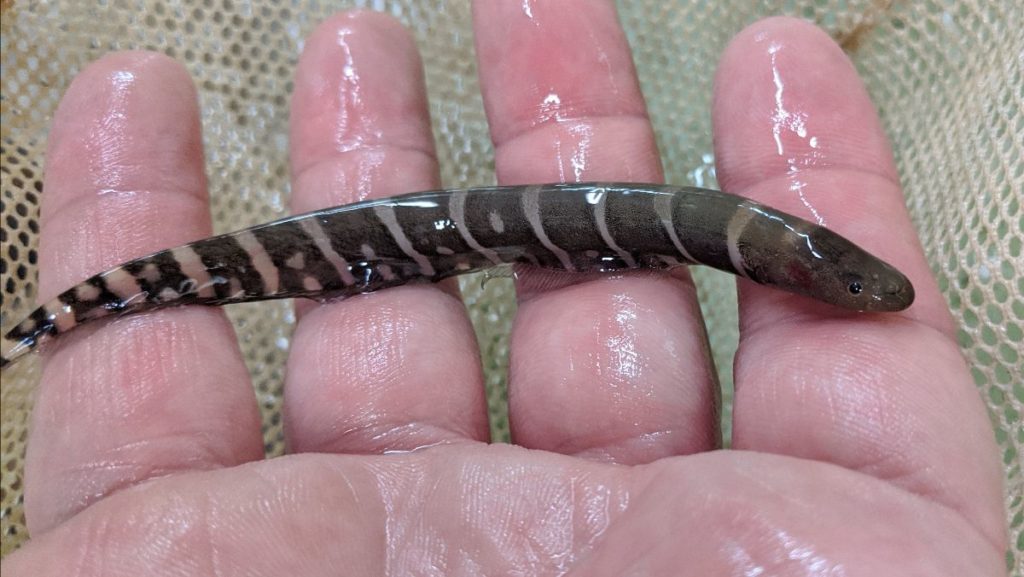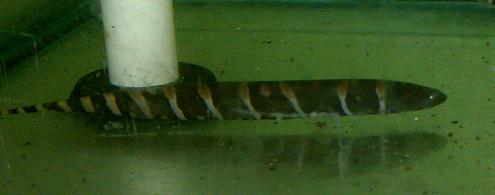
via Nautilus Tropical Fish Wholesale
“Tiger knives are back in stock from Peru!” exclaimed Joe Hiduke, Sales Manager for Nautilus Tropical Fish Wholesale in Plant City, FL, announcing the late September arrival of an attractively patterned knifefish species. “We haven’t had these in ages,” he continued.
“They hate each other but are usually OK with other bigger fish. They have a well-deserved reputation for chewing on each other a lot. There’s plenty of mixed reports about keeping them with other fish. It can be successful with good size and/or heavily armored fish like eartheaters, plecos, and doradids. Avoid more aggressive or big predatory cats; while tiger knives are toothy and bitey, they’re also a very easily swallowed shape for bigger predators.”

What Species Are They?
“The tiger knives are not easy to identify,” shared Hiduke. “Apparently this group of knives is a species complex with several similar species. Many of them are recently described, so what’s in the literature, or online, may be referring to different species.” It’s possible that the individuals shown here may belong to the species Gymnotus javari, sometimes given the common name of false zebra knifefish.
Hiduke noted that, in his opinion, these are actually somewhat aggressive fish and therefore tankmates require careful consideration. “What I can tell you from watching them here is that they hate each other more than just about any fish I’ve ever seen, including bettas! Based on customer feedback, tiger knifefish frequently bite pieces out of non-knifefish tankmates too, but sometimes get along fine with other fish.
“They’re not giant knifefish, but almost certainly get over a foot long. Some references list them with a max size of twice that. I anticipate max size is ballpark 18 inches (46 cm). This batch came in ballpark 5-6 inches (12-15 cm).

“I’m not aware that any of the Gymnotid knives have been bred in tanks, but I have seen references to them being paternal mouthbrooders, with males defending a nest [males of Gymnotus carapo revealed to be mouthbrooders, Cognato and Fialho, 2006]. But from everything I’ve seen, they would require giant tanks to keep them together long enough to breed!”
References
Diego de Paula Cognato; Clarice Bernhardt Fialho. (2006). Reproductive biology of a population of Gymnotus aff. carapo (Teleostei: Gymnotidae) from southern Brazil. Neotropical Ichthyology. Vol.4 No.3 Porto Alegre July/Sept. 2006. https://doi.org/10.1590/S1679-62252006000300005






Hi I’m looking for Zebra knife fish. Let me know if and when you have them available please.
I own one. He is relatively peaceful to his tankmates. He lives along side a brown ghoast, black ghoast, Elephant nose, Elephant nose knifefish, panda gara, galaxy pleco, scat, mono, silver dollars, hill stream loach, and a African dwarf frog . he likes pieces of nightcrawlers. Extremely shy. Spends most of the time well hidden. I have never seen him attack any other fish. But I have only had him 6 months. He may get more aggressive as he grows.
Thank you so much for this post I cant seem to find good articles about their tankmates anywhere:).